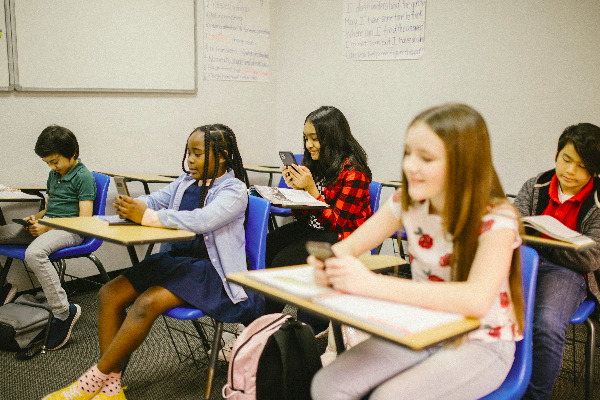Tech-Enhanced Learning and Mobile Natives
I consult with Eastern International College on topics around online learning. They use the LMS Canvas from Instructure for online courses and only started using it more widely about 3 years ago. It's a for-profit college that offers degrees and certifications in health and medical fields. That is a population of faculty and students who have always been reluctant to go online. These are very hands-on, in-a-lab classes primarily. But the move proved to be somewhat lifesaving when the Covid pandemic hit schools in the 2020 semester.
Instructure sent me some resources to think about for the fall semester and one was strategies for "Tech-Enhanced Learning." I will date myself by saying I recall when we were attaching the term "web-enhanced" to courses and strategies. I also remember very clearly when the term "digital natives" was used to describe the students we were meeting in our classrooms.
Thomas Husson had blogged some time ago about mobile natives from a marketing perspective. He notes that the first iPhone was released in 2007 and, on average, a kid gets their first cell phone around 11 years old. That means the first entire generation that mobile has impacted will enter the workforce about 2025 - but they are already in schools grades kindergarten through higher education.

Technology-enhanced (or sometimes "infused") learning is essential to best learning practices and also to keeping learning relevant. It surely will play a role - as it has already and not always in a positive way - in the survival of higher education institutions. Instructional technology is important to student engagement. The correct approach is not to digitize what is already being used. That's closer to what we called "web-enhanced" when we were starting to put materials online.
How do you use technology to transform pedagogy to be more engaging, innovative, and inclusive? here are their suggested strategies.
Though the pandemic forced coursework online out of necessity, digital learning should now be the default. All courses should be designed so that they could be taught online, even if the intent is to teach them in a classroom. When course content is and communication is available online students can access it anywhere and at any time.
As noted above, courses should also be optimized courses for mobile access since mobile phones are the primary tool used by many students and student income levels are no longer the deciding factor for that use. How many of your students have a desktop computer or even a laptop?
Engagement includes interactive experiences between faculty and students, and also connecting students with one another. This is also something that goes across face-to-face, hybrid and fully remote courses.
It is important that this shift goes beyond your classes. A "digital campus" means things beyond coursework. Virtual tutoring, office hours, counseling, tech support, and library access is especially critical for off-campus students to have that on-campus connection. And even residential students will often prefer digital over face-to-face. Mental health resources for psychological well-being are a leading factor for student success and schools can leverage technology to expand access to mental health resources including virtual counseling, staff mental health training, and student mental health apps.
HyFlex learning environments got a lot more attention during the pandemic. This approach is student-centered and offers equitable access to content. Students should be able to move between modalities based on their learning needs and the location - pandemic or not.
For a long time, educators have been told what to expect from Millennials. We have moved on to Generation Z which is usually defined as those 4 to 24 years old - which covers pre-school to graduate school. They are a group that has always had access to the Internet - as did many Millennials - but Gen Z also has mobile devices as their primary way of communicating and getting information in and out of classes.
I added this post to my category "Education 2.0" which for me meant where education was moving. I have seen articles about "Education 3.0" but I stick with version 2 because I haven't seen the really big seismic shift in education yet.
Some futurists say that by the end of this decade workers who still go to a workplace outside their home will walk in, plug their device into the network ( Is say "plug" but it will probably be wireless), connect to a bigger screen(s) and start working. Shifting to mobile is not in its early stage. There are 7 billion mobile subscriptions now. That's not everyone and not every student, but a report from Forrester Research said that mobile phone penetration is at 91 percent of Generation Y homes. (80 percent for all households across North America.) 79 present 13-20-year-olds say in surveys that they can't live without their smartphones compared to 70 percent of 21-39-year-olds.
SOURCES
instructure.com/higher-education/back-to-school/faculty
blogs.forrester.com/thomas_husson/14-12-02-mobile_and_mobile_natives...
linkedin.com/pulse/mobile-natives-eric-isham/
ypulse.com/article/2022/03/29/3-stats-on-how-gen-z-is-being-raised-on-smartphones/
marketingdive.com/ex/mobilemarketer/cms/news/research/1576.html
Trackbacks
Trackback specific URI for this entryThe author does not allow comments to this entry
Comments
No comments